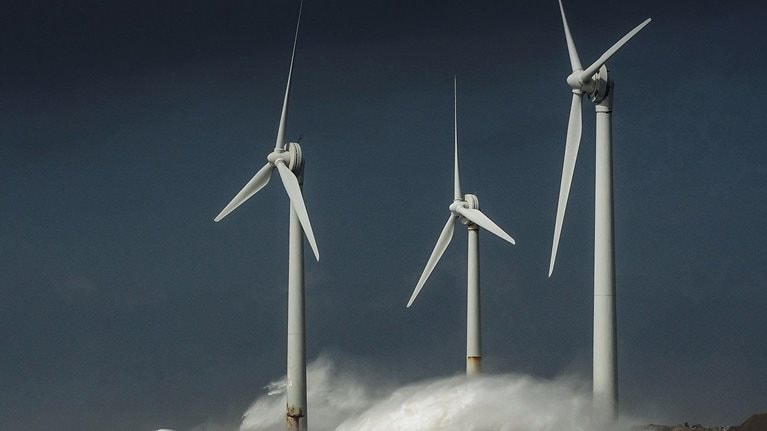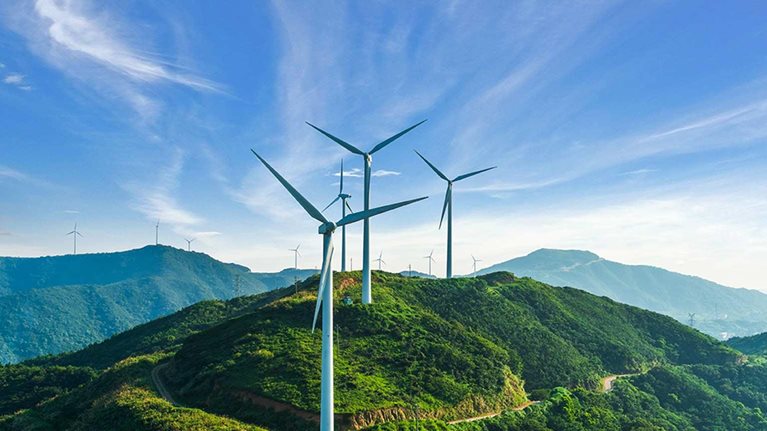Does your business treat climate change as a far-off risk, something for the future but not a priority today?
That’s a mistake. Climate change is here. Its economic impact is real and growing, and action now is essential.
Look at Florida’s tidal flooding, for example. Waters rose above the “nuisance” threshold in parts of Miami-Dade 14 days a year on average between 2005 and 2017, more than triple the rate of the 11 years prior. Or consider extreme heat like we saw this summer across Europe and are increasingly experiencing globally. In northern India, summer temperatures are hitting 120 degrees Fahrenheit, shutting down outdoor work in cities and entire regions for days at a time. Or agricultural degradation: In some parts of Brazil, the usual two-crop growing season may now only yield a single crop. Around the world, the list goes on and on.
Business leaders can no longer ignore the physical effects of climate change, at least not without peril. Global infrastructure, supply chains, food systems, asset prices, land and labor productivity, and economic growth itself are increasingly at risk of deterioration due to a rapidly changing climate. And a more connected global economy means that risk in one part of the world will often extend well beyond the place of immediate impact.
Navigating the transition the world needs will especially require engagement from renewable and traditional (oil, natural gas, and coal) energy producers. That has to occur at both the company and industry level, given the need for additional regulation. Getting the balance right between sustaining development and curbing emissions will be particularly complex in emerging economies, where the link between rising growth and rising carbon dioxide is more entrenched than in the developed world. We see this daily in our work, and any climate-change solution has to incorporate this reality.
All businesses—whether involved in energy production or not—can take the following steps right now to be well-prepared for climate change.
First, assess and plan. Doing this right requires conducting a detailed review of all the potential risks to your enterprise from physical climate risk. Use the latest climate modeling and look for systems within or connected to your enterprise that may fail as the world gets steadily hotter and more volatile.
Could your global supply chains become disrupted? Recall, for instance, how extreme flooding in Thailand in 2011 disrupted global production of hard-drive disks, among other products, resulting in a doubling of prices on the global market. When do storm surges and flooding make it challenging to get supplies in and products out of factories on the eastern seaboard of the United States? For hospitals, are your backup generation systems sufficient, and does current regulation allow you to conduct surgery with backup power? For construction, how could high temperatures impair outdoor working hours? For agriculture-based industries, how could drought impact yields?
Would you like to learn more about our Sustainability Practice?
Second, protect your assets. Armed with this transparency and knowledge, a company can create a set of resiliency and adaptation measures to reconfigure internal operations and supply chains, redirect capital to growth areas and new business, and protect assets.
For example, owners of infrastructure can incorporate climate risk assessments and adaptation strategies into capital budgets from the start of each project using a resilience scorecard and rating system. Utilities can strengthen their grid, make new investments in energy storage and microgrids, and work with new partners to finance resiliency strategies.
Third, decarbonize your operations. Consumers are demanding climate-friendly products and services and that demand will only grow. A core ingredient for this is to take carbon out of your own operations, something that will soon become table stakes for all companies to be credible with consumers and regulators.
Once they identify the full set of economically viable carbon abatement opportunities across their global footprint, many executives conclude that they need to launch an enterprise-wide transformation. Such a transformation often requires a centralized organization and ring-fenced capital, with regional teams. It may also be necessary for companies to develop industry-wide transition plans—something we’re seeing across sectors, including plastics, oil and gas, power, agriculture, and mobility. Finally, don’t ignore the emissions that your customers generate from use of your products or services, as these too will come under scrutiny.
Fourth, make climate intelligence a core capability. Climate risk assessment and management should be integrated into all key business processes: strategic planning, capital allocation, supply chain management, and product development, to name a few. Companies that increase the awareness and transparency of their physical climate risk with employees, customers, suppliers, and investors will be more prepared to manage the pervasive and cross-cutting nature of climate risk.
For centuries now, the global economy has taken climate stability for granted. Investing, buying, selling, borrowing, and lending all require a degree of confidence that tomorrow will be pretty much like today. But climate change is introducing new uncertainty, threatening to upend our assumptions about future growth and prosperity.
The next decade is decisive. Acting now to prepare your enterprise for climate change has a double payoff. Not only will it help you build a lasting commercial advantage, it will also help raise the odds that we avoid potentially catastrophic runaway climate change in the second half of the century.
This commentary first appeared on Fortune.com on September 3, 2019, and is reprinted here by permission.


